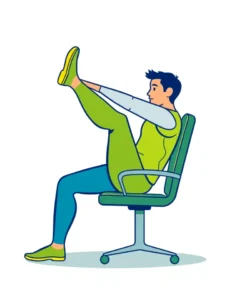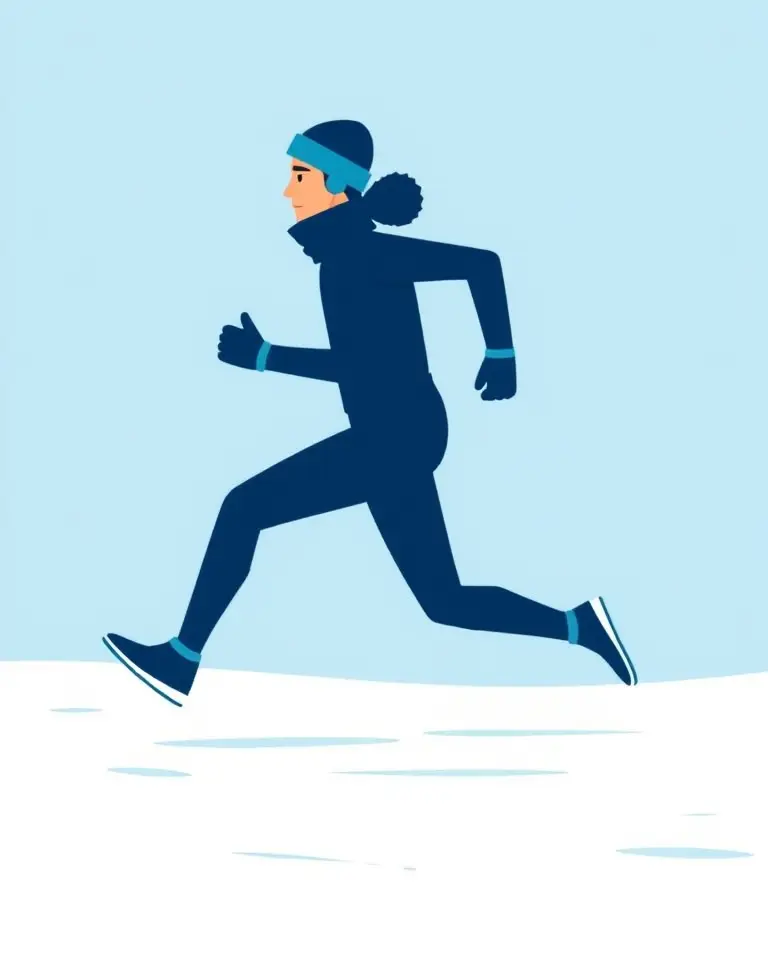As winter’s icy grip tightens, many retreat indoors, but health experts are increasingly touting the benefits of braving the cold for your workout. Exercising in cooler temperatures can provide unique advantages, but it also requires a careful approach to ensure safety. Here’s why you might want to consider a cold-weather workout and how to do it right.
The Upsides of Cold-Weather Exercise
Enhanced Calorie Burn
One of the most compelling reasons to exercise in the cold is the potential for increased calorie expenditure. When your body is exposed to lower temperatures, it has to work harder to maintain its core temperature. This process, known as thermogenesis, can lead to a higher metabolic rate, which translates to more calories burned, even when compared to the same workout done in warmer conditions. Your body activates mechanisms like shivering and brown fat cells to create heat.
Cardiovascular Benefits
Cold weather can provide a more intense cardiovascular workout. Your heart has to work harder to pump blood throughout your body, helping to keep your cardiovascular system in top shape. This can be particularly beneficial, considering cardiovascular disease remains a significant health threat.
Mood Improvement
The winter months can often bring about feelings of lethargy or even the “winter blues” or Seasonal Affective Disorder (SAD). Engaging in physical activity outdoors can combat this by increasing energy levels and triggering the release of endorphins, which improve mood. The simple act of being outdoors and breathing fresh air can also lift spirits.
Boosted Immune System
While it might seem counterintuitive, exercising in cold weather may actually boost your immune system. The body works harder to defend itself against the elements, potentially leading to a stronger immune response when faced with viruses and infections. Regular exercise can help reduce the likelihood of getting sick during the winter months.
Enhanced Performance?
Some studies suggest that endurance exercise is optimized in cool environments, up to about 20°C. However, this can shift to a decrease in performance if the cold is severe enough to overwhelm the body’s ability to maintain its core and muscle temperature. It’s a complex issue, with some research indicating that cold temperatures can decrease aerobic performance, while other studies have found that they have no effect, or even improve it. The impact also depends on the type of exercise, with more explosive activities being more negatively impacted by cold.
Potential Risks of Cold-Weather Exercise
Hypothermia
Hypothermia is a serious risk when exercising in the cold. It occurs when your body temperature drops to a dangerously low level, below 95°F (35°C). The risk increases with exposure to cold air, wind, and wet conditions. Symptoms include shivering, slurred speech, loss of coordination, and a weak pulse. If you suspect hypothermia, seek medical attention immediately.
Frostbite
Frostbite occurs when body tissues freeze, most commonly affecting the extremities such as fingers, toes, ears, and nose. The risk of frostbite significantly increases when temperatures drop below 5°F (-15°C), especially with wind chill. Exposure to wind speeds of 20 mph at 0°F (-18°C) can cause frostbite in just 30 minutes. The time drops to just 10 minutes when the wind chill is at -15°F (-26°C).
Decreased Performance
While moderate cold can be beneficial, extreme cold can negatively impact muscle performance. A 1°C (0.6°F) drop in muscle temperature can result in a 4-6% decrease in power output. An 8°C (14.4°F) drop can reduce muscle power by as much as 31%. This is because cold temperatures slow down the body’s chemical processes, including muscle contractions and can lead to higher levels of lactate in muscle tissue.
Dehydration
It’s easy to become dehydrated in cold weather because the body’s thirst response is diminished by up to 40%. Cold air is also drier than warm air, leading to increased fluid loss through respiration. This is why it is vital to hydrate before, during, and after exercise, even when you don’t feel particularly thirsty.
How to Stay Safe While Exercising in the Cold
Dress in Layers
Wearing multiple layers of clothing is crucial for staying warm and dry. The layers should include:
- Base Layer: Moisture-wicking fabrics like wool, polyester, or synthetic materials are ideal for keeping sweat away from your skin. Avoid cotton as it holds moisture and can make you colder.
- Mid Layer: This layer should provide insulation and can consist of fleece or wool.
- Outer Layer: A windproof and waterproof jacket is essential to protect you from the elements.
Protect Your Extremities
Protect your hands, feet, head, and ears with warm accessories such as hats, gloves or mittens, ski masks, thermal socks, and earmuffs. When the temperature drops, blood flow concentrates in the body’s core, making the extremities more vulnerable to frostbite.
Check the Weather
Always check the weather forecast before heading out and pay special attention to the temperature, wind chill, and moisture levels. If the temperature falls below 0°F (-18°C) or the wind chill reaches -17°F (-27°C), consider moving your workout indoors.
Warm-Up Properly
A proper warm-up is essential for preparing your muscles for activity in cold weather. Muscles take longer to acclimate in cold conditions, so double the usual warm-up time. Perform the aerobic part of your warm-up before static stretching to improve muscle flexibility.
Stay Hydrated
Hydrate before, during, and after your workout, even if you don’t feel thirsty. Carry water or a sports drink, especially for longer workouts, and consider electrolyte-rich beverages.
Be Visible
Wear reflective clothing or use lights to make sure you’re seen by drivers and others, especially during early morning or late evening workouts.
Have a Backup Plan
Be prepared to move your workout indoors if the weather turns too extreme. Having a backup plan can help you stay active even when the weather is not cooperating.
Know Your Limits
Start with lower loads or intensity and gradually increase your workout. Pay attention to your body and stop if you feel unwell. Don’t push yourself too hard, especially when starting a cold-weather exercise routine.
Essential Gear for Cold Weather Workouts
Investing in appropriate gear is key to safe and comfortable cold weather workouts. Here are some recommended items:
- Moisture-wicking base layers: Look for merino wool or synthetic fabrics.
- Insulated mid-layers: Vests, hoodies, and fleece jackets offer warmth without bulk.
- Weatherproof outer layer: A lightweight, waterproof, and windproof running jacket is essential.
- Warm leggings or tights: Consider insulated running pants or leggings made from materials that wick away moisture.
- Thermal socks: Look for merino wool or synthetic socks that provide warmth and cushioning.
- Gloves or mittens: Insulating gloves or mittens help keep your hands warm and protect them from frostbite.
- Hats or headbands: Protect your head and ears with a warm hat or headband, preferably made of wool.
- Neck gaiters or buffs: Protect your neck and face on windy days.
- Running shoes with good traction: Consider winterized running shoes that provide better grip on icy surfaces.
- Visibility gear: Reflective clothing, lights, and LED accessories are essential for exercising in low light conditions.
Recommended Brands and Products
- Base Layers: Baleaf’s Sustainable Long-Sleeve Baselayer, Tracksmith Brighton Base Layer, Merino Tech Merino Wool Base Layer
- Leggings: Lululemon Fast and Free Cold Weather Running Pant 28″, Athleta Rainier Tight
- Tops: MathCat Seamless Workout Shirts, 32 Degrees’ mock neck top.
- Jackets: Lululemon Another Mile Jacket
- Headwear: Smartwool Merino 250 Beanie, Le Bent Midweight Headband
- Hand Protection: Smartwool Merino Sport Fleece Training Gloves
- Lights: Nite Ize Taglit Hi-Vis, reflective clothing
- Vests: On Weather Vest
Embracing the chill and exercising outdoors can be a rewarding experience during the winter months. By understanding the risks and following the guidelines provided, you can enjoy the unique benefits of cold weather workouts while ensuring your safety. Remember to dress appropriately, stay hydrated, and listen to your body.







